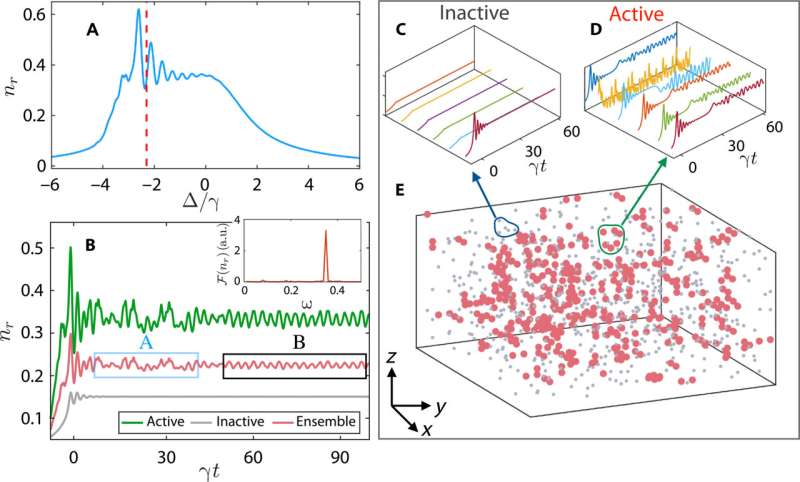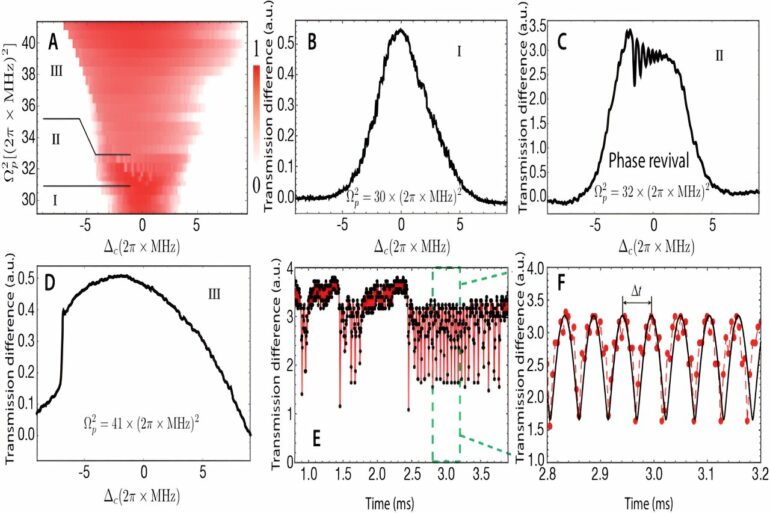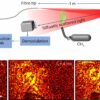A collaborative research team has reported experimental evidence of a transition from ergodic toward ergodic breaking dynamics in driven-dissipative Rydberg atomic gases. The results were published in Science Advances.
Many-body systems often relax to an equilibrium state because of ergodicity, such that an observable becomes invariant with time. In the case of robust equilibrium, the observable rapidly seeks new fixed points in phase space. However, there are exceptions, for example, in integrable and many-body localized systems, where broken ergodicity can inhibit system equilibrium and thermalization.
The study of ergodic breaking is instructive for market collapse and recovery in finance, brain epilepsy in neural networks, and early warning of critical leaps in complex systems. Rydberg atoms with long-range interactions serve as ideal many-body systems to study nonergodic many-body dynamics. In a system of driven-dissipative Rydberg atoms, the system will have a non-equilibrium long-time phase oscillation due to the aggregation of Rydberg atoms.

Rydberg clusters and synchronized oscillations. © Science Advances (2024). DOI: 10.1126/sciadv.adl5893
The researchers got the experimental observation of the non-ergodic many-body dynamics in a gas of strongly interacting Rydberg atoms by two photon excitation of Rydberg atoms at room temperature, which is affected by a combination of laser coherent drive, Rydberg atom interactions and dissipation.
By tuning the laser parameters, the research teams observed a non-equilibrium phase transition in which a bifurcation between the ergodic and weakly non-ergodic phases occurred. The atoms in the ergodic phase were uniformly distributed, while the number of Rydberg state particles in the weakly non-ergodic phase showed nontrivial oscillations.
The researchers also captured long-time, many-body collective oscillations in the order of milliseconds, which far exceed the time scale of the associated dissipation. In accordance with the analysis of the researchers, this ergodic breaking was due to the aggregation of strongly interacting Rydberg atoms in free space.
Rydberg many-body systems are of great importance to probe ergodicity breaking dynamics and nonequilibrium phase transition. This work has shed light on the ergodicity of complex matter and non-equilibrium phenomenon, uncovering the relation between the dissipation and the ergodicity.
The teams were led by Guangcan Guo, headed by Prof. Baosen Shi and Prof. Dongsheng Ding from University of Science and Technology of China (USTC) of Chinese Academy of Science, with the collaborative efforts from University of Nottingham, East China Normal University and Durham University.
More information:
Dongsheng Ding et al, Ergodicity breaking from Rydberg clusters in a driven-dissipative many-body system, Science Advances (2024). DOI: 10.1126/sciadv.adl5893
Provided by
University of Science and Technology of China
Citation:
Researchers reveal evidence of transition from ergodic toward ergodic breaking dynamics (2024, April 1)



